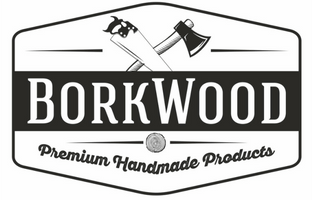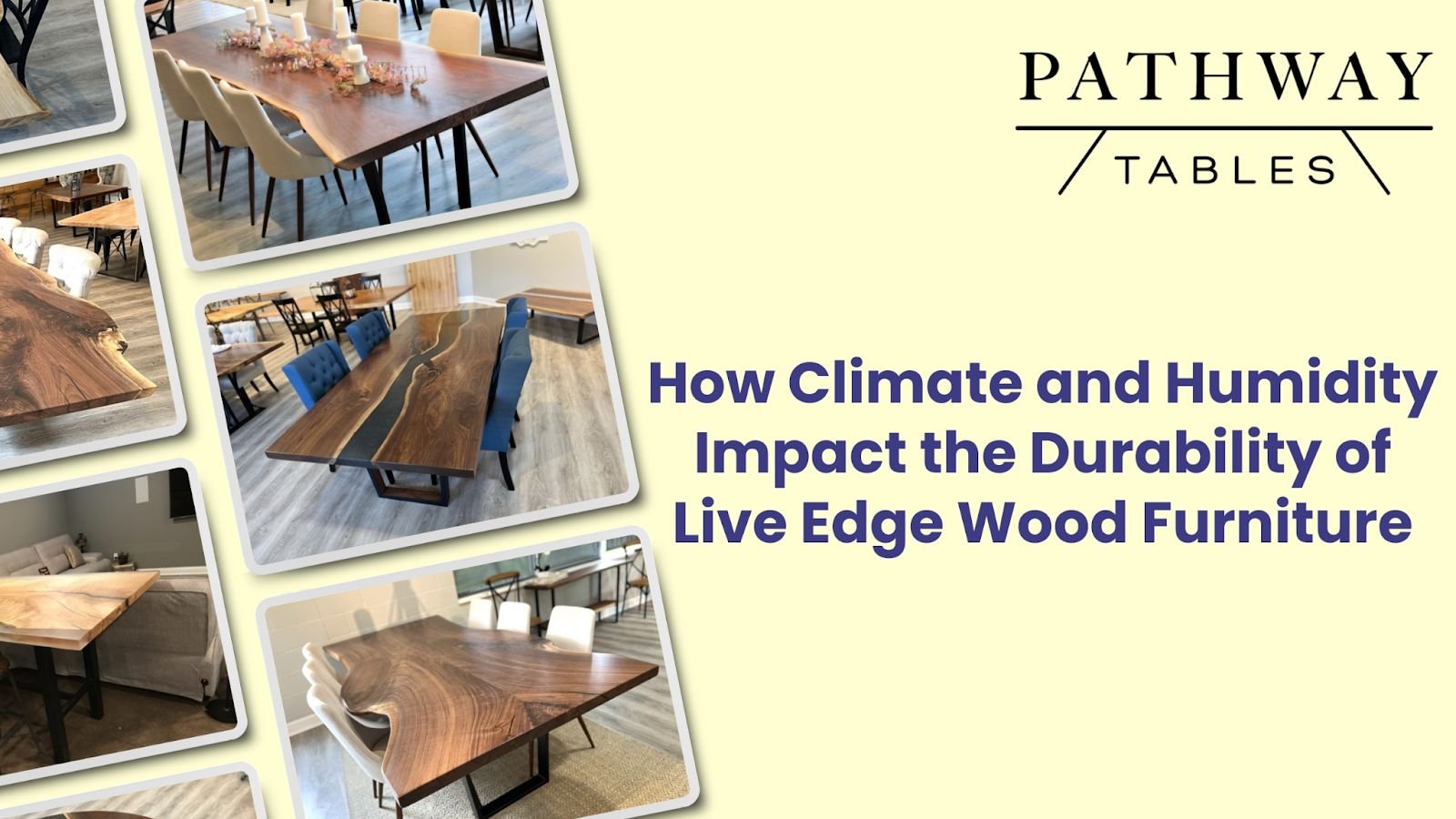How Climate and Humidity Impact the Durability of Live Edge Wood Furniture
Live edge wood furniture, with its natural edges and rustic charm, has gained popularity as a stylish choice for modern homes. Whether it’s a live edge dining table, coffee table, or custom wood dining table, this unique furniture brings the beauty of nature indoors. However, the durability of live edge furniture can be significantly affected by environmental factors like climate and humidity. In this blog, we’ll explore how these elements impact live edge wood and offer practical tips to protect your custom dining tables for the long term.
The Impact of Humidity on Live Edge Tables
High Humidity
Excess humidity can cause live edge wood to absorb moisture, leading to expansion. Over time, this can result in warping or swelling, making your once-beautiful live edge dining table uneven. If the wood takes on too much moisture, it may also develop mold or rot, particularly in the bark areas, which tend to be more porous.
To maintain the structural integrity of your live edge coffee table or dining room table, it’s essential to monitor the humidity levels in your home. Ideally, humidity should remain between 35% and 55%. If you live in a humid region or during the summer months when humidity is naturally higher, using a dehumidifier can help control moisture levels and protect your furniture.
Low Humidity
On the flip side, extremely dry air can cause live edge wood to lose moisture, leading to shrinkage. In dry conditions, you might notice cracks forming along the grain of your custom wood dining table, especially near the live edges. This is because the uneven thickness of the wood causes different areas to dry out at varying rates.
In regions with low humidity, particularly in winter when indoor heating systems dry out the air, using a humidifier can help balance moisture levels and prevent the wood from becoming brittle or cracked.
Climate Effects on Live Edge Furniture
Extreme Temperature Variations
Climate doesn’t just refer to humidity—it also encompasses temperature. Live edge tables, like other types of wood furniture, are sensitive to sudden changes in temperature. Extreme heat or cold can cause the wood to expand or contract rapidly, leading to damage such as warping or splitting. For example, placing a live edge coffee table near a fireplace or a live edge dining room table in direct sunlight can expose the wood to high temperatures, which can dry it out too quickly and cause cracks.
Seasonal Changes
Seasonal fluctuations in temperature and humidity also affect the durability of live edge dining room tables. In winter, heating systems dry out indoor air, while summer often brings increased humidity. These continuous shifts cause the wood to expand and contract, leading to long-term wear and tear.
One practical way to mitigate seasonal damage is by regularly treating your live edge furniture with a quality wood conditioner or oil. This not only keeps the wood hydrated but also creates a protective barrier against environmental changes.
Protecting Your Live Edge Dining Table: Practical Tips
Control Indoor Humidity Levels
As mentioned, keeping humidity levels between 35% and 55% is key to preserving the integrity of your live edge dining room table. Invest in a hygrometer to monitor indoor humidity and use a humidifier or dehumidifier as needed to maintain optimal conditions.
Apply Protective Finishes
Protecting live edge coffee table with finishes like oil, wax, or polyurethane can help seal the wood, making it more resistant to changes in climate and humidity. However, avoid overly thick coatings, which may interfere with the natural beauty of live edge furniture. Regularly reapply finishes to ensure the wood remains protected over time.
Use Table Mats and Coasters
Although this tip may seem basic, using table mats and coasters can make a big difference in preventing moisture damage. Cold glasses or hot plates can create condensation that seeps into the wood, causing swelling or watermarks. Protect your live edge dining table by encouraging family and guests to use coasters.
Custom Dining Tables: Built to Last, But with Care
The natural beauty of live edge furniture, from dining tables to coffee tables, adds character and elegance to any space. However, understanding how climate and humidity impact its durability is essential to maintaining its charm for years to come. By taking the right precautions—controlling indoor humidity, avoiding heat sources, applying protective finishes, and using coasters—you can ensure that your custom wood dining table stays in excellent condition, no matter the weather outside.
Invest in the proper care of your live edge furniture, and it will continue to be a stunning centerpiece in your home for decades.







